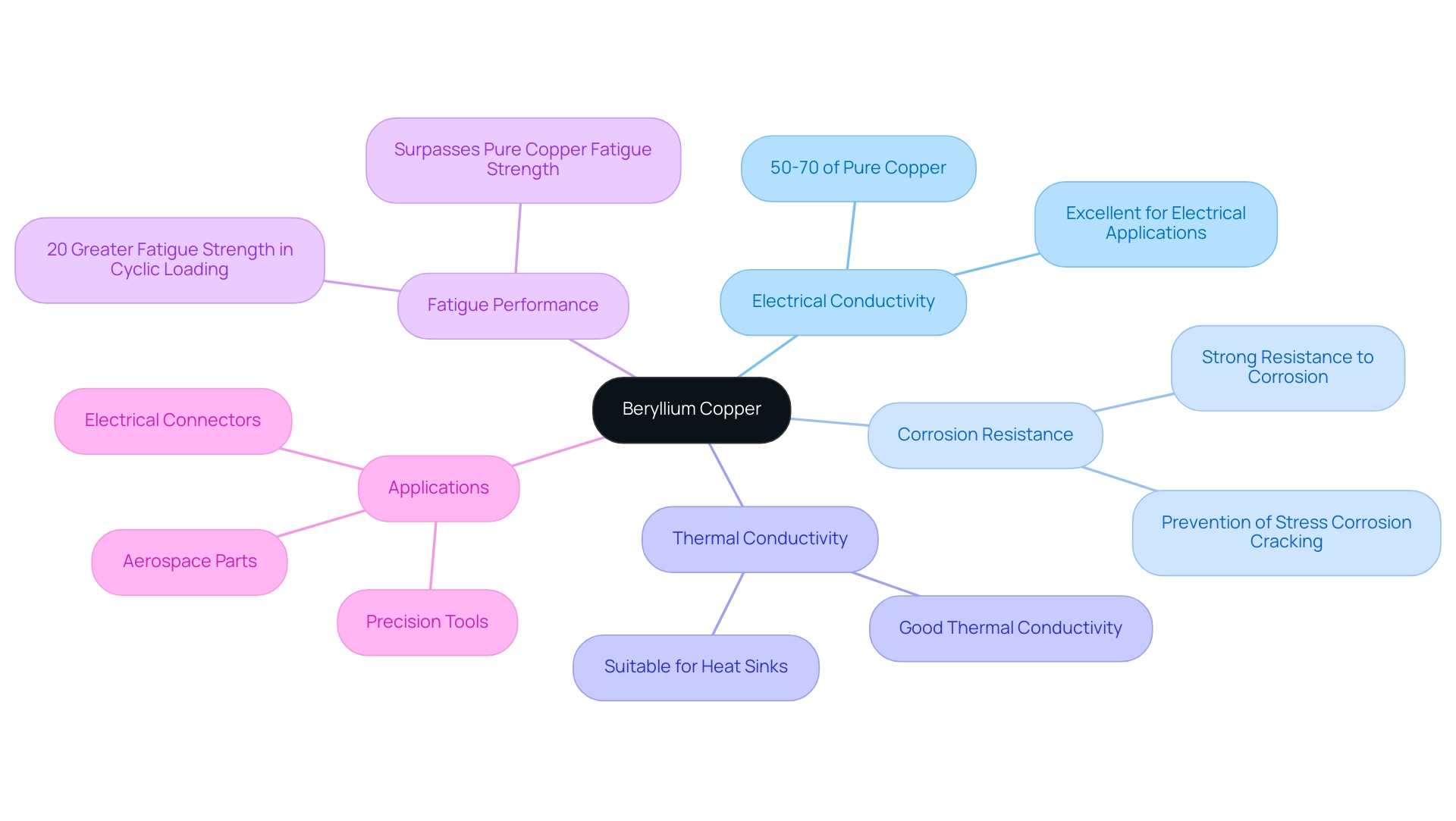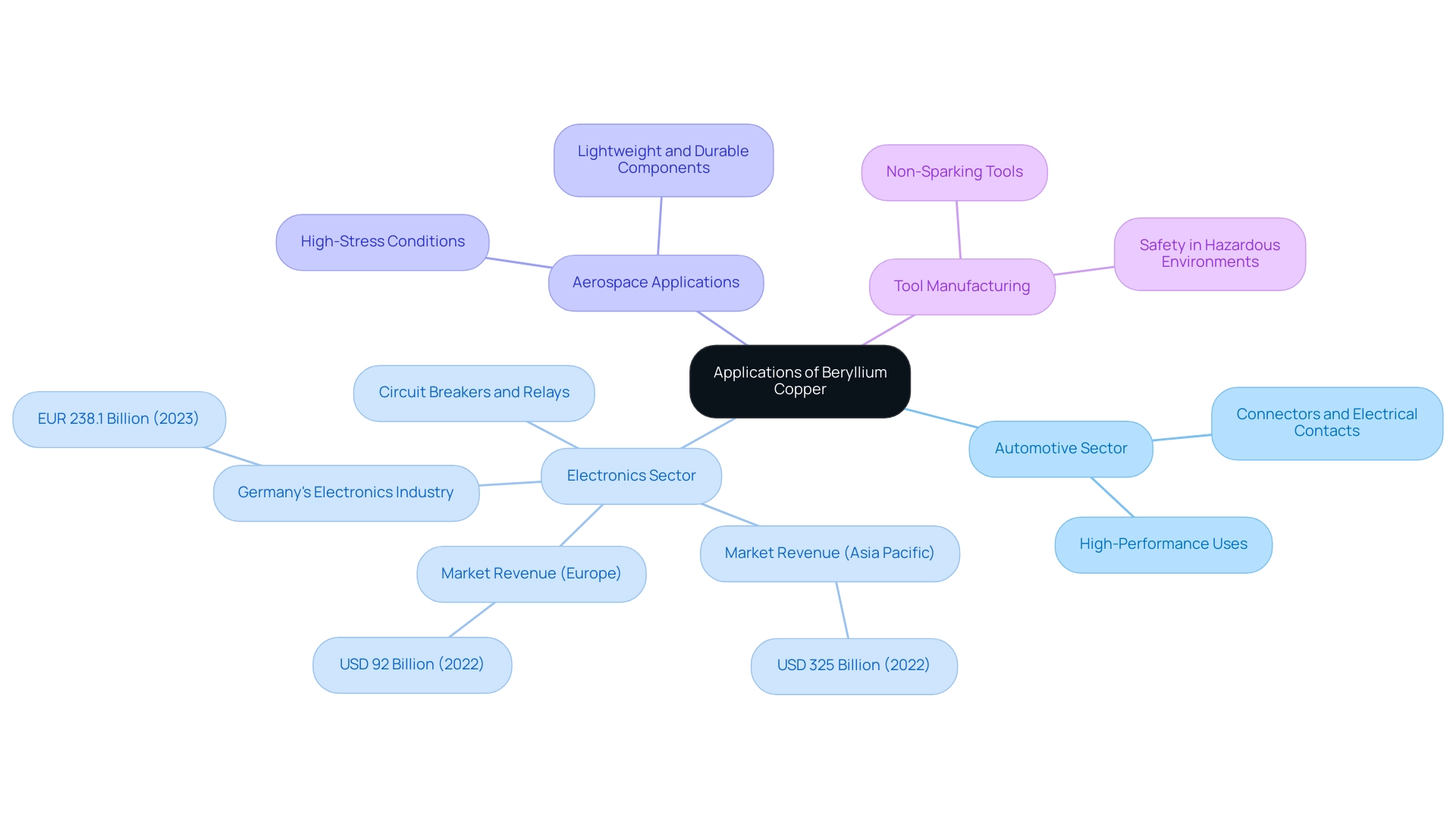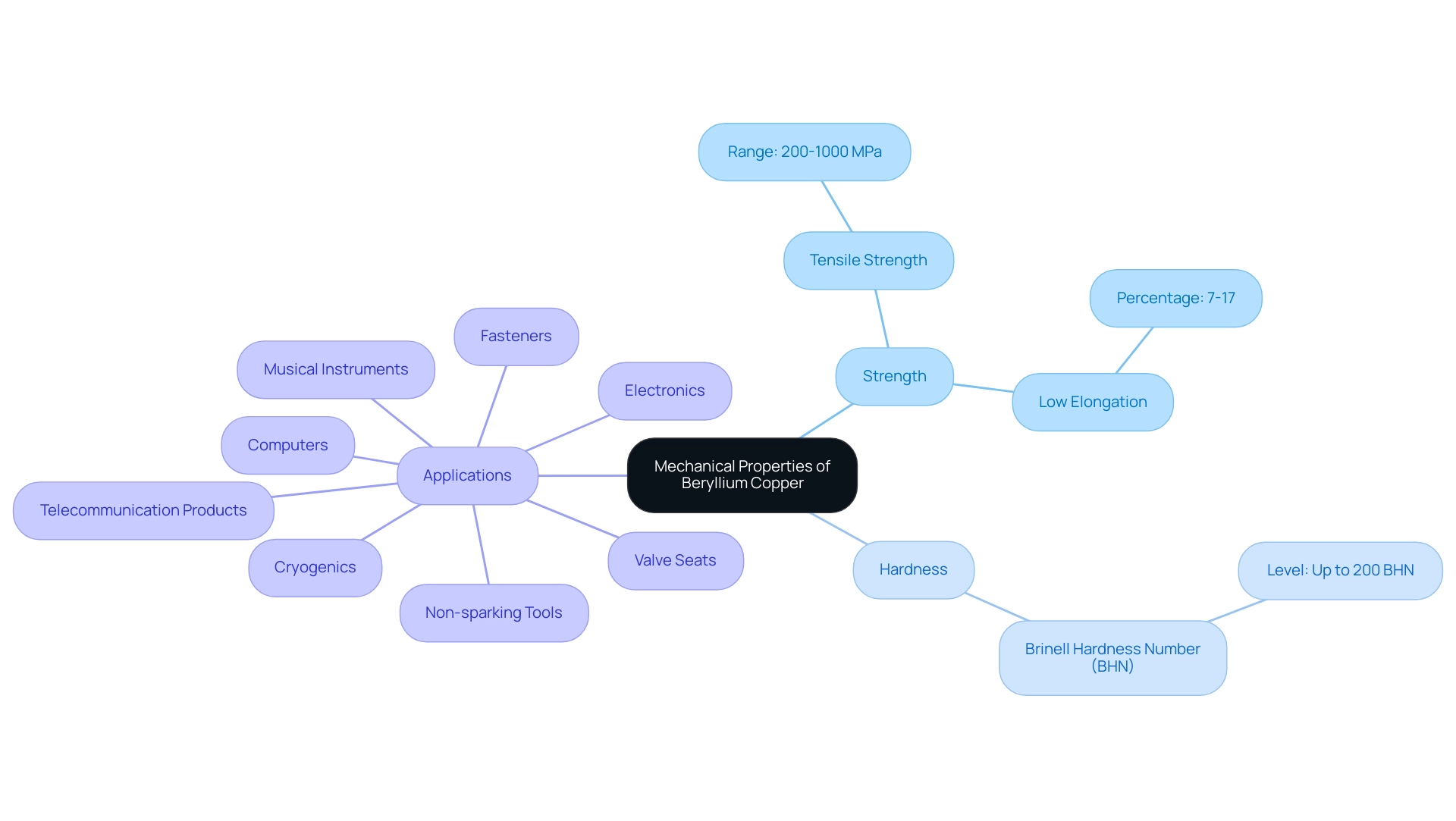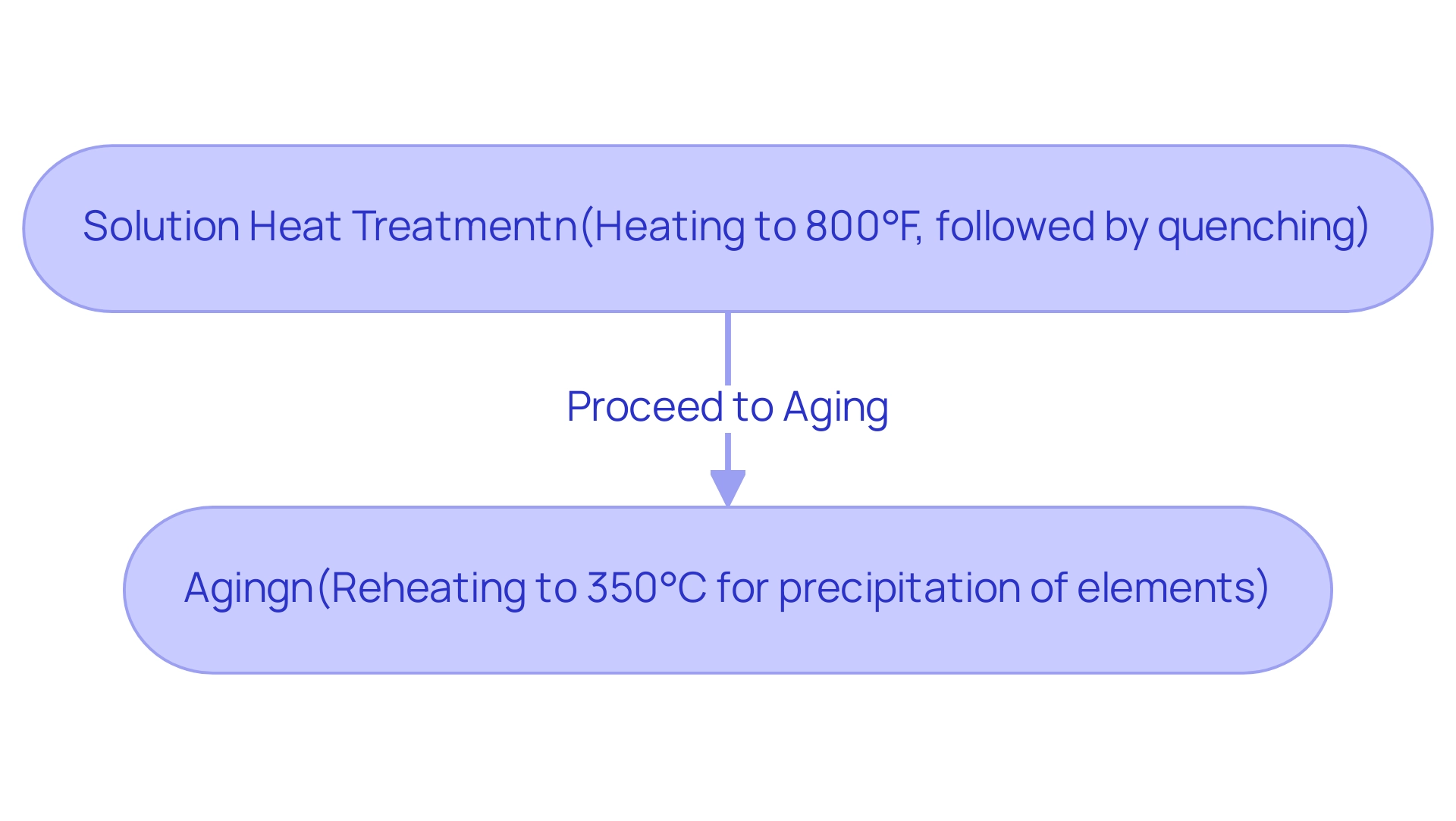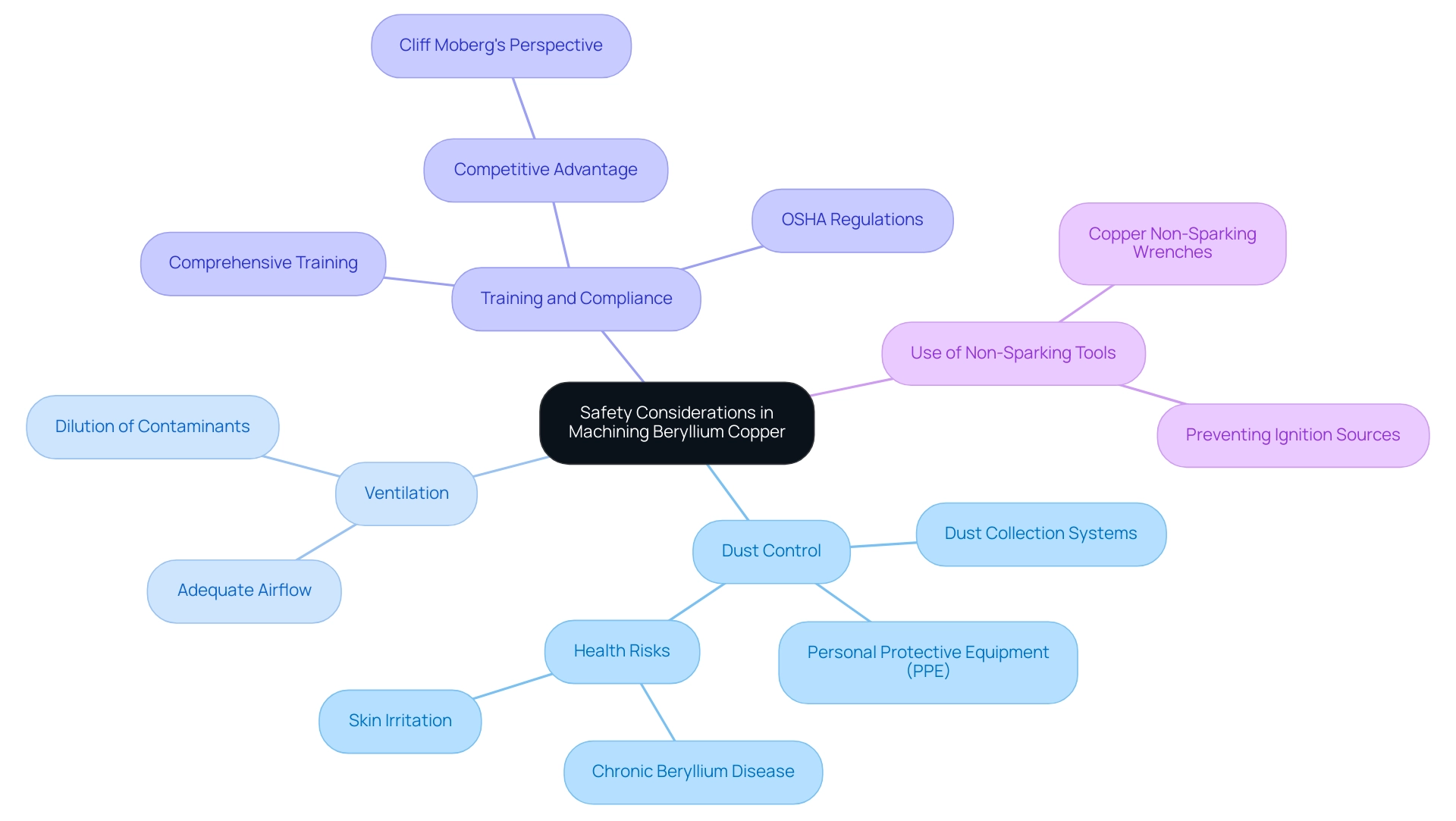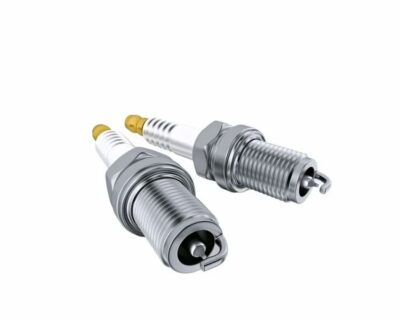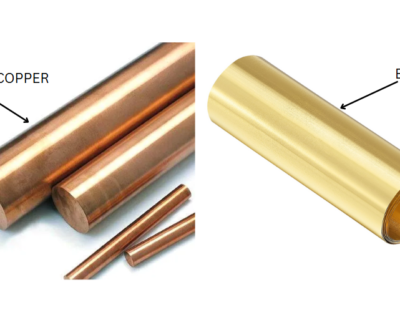Blogs

Understanding Beryllium Copper Data Sheets: An In-Depth Tutorial on Properties and Applications
Introduction
Beryllium copper stands out as a remarkable alloy, combining the best attributes of copper with the unique benefits of beryllium. With its impressive electrical and thermal conductivity, high strength, and exceptional corrosion resistance, this alloy has become indispensable across various industries, from automotive to aerospace.
As procurement managers seek to optimize their sourcing strategies, understanding the intricate properties and applications of beryllium copper is essential. This article delves into the following topics associated with this versatile material:
- Chemical composition
- Mechanical properties
- Heat treatment techniques
- Safety considerations
By exploring the strengths and applications of beryllium copper, organizations can harness its potential to enhance performance and ensure safety in demanding environments.
Chemical Composition and Key Properties of Beryllium Copper
This alloy is a mixture mainly made up of Cu with a modest Be content, generally varying from 0.5% to 3%. This unique combination results in a material that not only boasts exceptional electrical and thermal conductivity but also offers high strength and remarkable corrosion resistance. Key properties of beryllium copper include:
- Electrical Conductivity: It achieves approximately 50-70% of the conductivity of pure copper, positioning it as an excellent choice for various electrical applications.
- Corrosion Resistance: The alloy demonstrates strong resistance against multiple forms of corrosion, including stress corrosion cracking, thus ensuring longevity in demanding environments.
- Thermal Conductivity: The alloy retains good thermal conductivity, making it suitable for uses such as heat sinks, which are essential in maintaining optimal operating temperatures.
- Fatigue Performance: Recent studies indicate that beryllium copper surpasses the fatigue strengths of pure copper, making it suitable for challenging uses. As noted by Lothar Wagner, Chair of Applied Materials Science and Engineering at TU Clausthal, “Understanding the microstructure/property relationships is crucial for evaluating material performance under fatigue conditions.”
Particular uses of Copper plates involve aerospace parts, electrical connectors, and precision tools, where its strength and conductivity are essential. Additionally, with Domadia’s Copper meeting international standards UNS and ASTM, it emphasizes our commitment to quality, innovation, and the provision of tailored solutions for industrial applications. A case study titled ‘Fatigue Strength of High-Performance Alloys’ evaluated the fatigue strengths of these materials under various loading conditions, demonstrating that they exceed those of pure metal and are comparable to or better than non-hardened plain carbon steels.
The research showed that Beryllium Alloy plates sustained 20% greater fatigue strength than pure metal in cyclic loading examinations. Grasping these characteristics is crucial for selecting the suitable grade of beryllium alloy for specific applications in various sectors, particularly in automotive and electronics, as detailed in the beryllium copper data sheet.
Applications of Beryllium Copper in Various Industries
The alloy is acknowledged for its adaptability and is widely employed in numerous sectors, such as:
- Automotive Sector: Its outstanding conductivity and strength render it an optimal selection for connectors and electrical contacts. Automotive engineers have observed that beryllium alloy offers unparalleled reliability in high-performance uses, highlighting its significance in contemporary vehicle design.
- Electronics Sector: This alloy is a crucial element in circuit breakers, relays, and other essential components where reliable electrical performance is vital. In 2022, the electronic appliances sector in Asia Pacific generated an impressive USD 325 billion, while Europe contributed USD 92 billion, underscoring the increasing demand for dependable materials such as a specific metal alloy.
- Aerospace Applications: Valued for its lightweight and durable properties, this alloy is ideally suited for aerospace components subjected to high-stress conditions, ensuring safety and performance.
- Tool Manufacturing: It is extensively utilized in non-sparking tools, particularly non-sparking wrenches, where safety is a crucial concern in hazardous environments. Non-sparking tools are the best alternative for non-sparking applications in explosive potential environments, preventing accidental ignitions and enhancing safety.
By understanding the extensive applications of beryllium copper and utilizing the beryllium copper data sheet along with insights from industry experts, such as those from leading players like Materion Corporation and NGK Berylco, procurement managers can more effectively identify suitable suppliers and materials that align with evolving industry demands. Domadia’s dedication to supplying high-quality, tailored Copper Plates, supported by expert assistance, emphasizes the significance of obtaining dependable materials for project success. Experience the difference quality and expertise can make in your next project. Reach out to us today to discover more about our Copper Plates and how we can assist in elevating your project. Moreover, the robust performance of Germany’s electronics sector, with a combined revenue of EUR 238.1 billion in 2023, further emphasizes the significance of this alloy in fulfilling market demands, thereby enhancing their procurement strategies.
Mechanical Properties: Strength and Hardness of Beryllium Copper
The beryllium copper data sheet indicates that beryllium alloy is highly regarded for its exceptional mechanical properties, which are critical for its various applications across multiple industries. The tensile strength of certain alloys typically ranges from 200 to 1000 MPa, depending on the specific alloy composition and treatment processes used. Some beryllium-based alloys include 0.15 to 0.5% of the element and show a low elongation percentage of 7 to 17%, factors that greatly affect their performance.
This remarkable strength positions beryllium copper, as detailed in the beryllium copper data sheet, as one of the most robust copper alloys available, making it ideal for challenging uses.
Regarding hardness, these alloys can achieve levels up to 200 BHN (Brinell Hardness Number) following the appropriate heat treatment, which markedly enhances their wear resistance. Such mechanical properties not only ensure durability but also allow the material to excel in situations requiring high strength and resilience.
For instance, BrushCAST copper-beryllium casting alloys are specifically designed to meet stringent technical specifications, providing excellent strength and electrical conductivity. The inclusion of titanium in these alloys further enhances machinability and polishability, broadening their versatility. They are especially advantageous in areas such as plastic mold making, non-sparking safety tools, and defense uses.
Moreover, the beryllium copper data sheet highlights that this alloy finds extensive application in:
- Computers
- Electronics
- Fabrication of non-sparking tools
- Fasteners
- Telecommunication products
- Valve seats
- Cryogenics
- Musical instruments
As Tim Bradow from Rigaku remarks, > CT instruments can alter battery analysis workflows <, emphasizing the adaptability and innovation within the field of metal applications. This blend of strength, versatility, and safety aligns perfectly with Domadia’s dedication to delivering high-quality wire, foils, sheets, rods, and exceptional customer service, ensuring project success, especially in settings where performance and safety are crucial.
Furthermore, Domadia provides customization options to adapt solutions to meet specific project needs, reinforcing our role as your trusted partner in Copper solutions.
Heat Treatment Techniques for Optimizing Beryllium Copper
The heat treatment of the alloy, essential for enhancing its mechanical properties, plays a significant role in the safety and reliability of tools like the Non-Sparking Wrench made from this material. This process includes two essential stages:
Solution Heat Treatment: The alloy is heated to around 800°F (427°C), permitting the element to dissolve into the metal matrix. Rapid cooling, or quenching, follows, which locks in the dissolved elements. It’s important to note that high-temperature treatments can result in a greater presence of the less stable β phase, which may transform into martensite upon quenching, influencing the material’s final properties.
Aging: The material is then reheated to about 350°C during the aging stage, promoting the precipitation of a specific element and significantly enhancing the alloy’s strength and hardness. Research indicates that aging temperatures, typically from 500°F to 700°F, affect the duration necessary to achieve peak mechanical properties, with standard treatments often set at 600°F for two to three hours. This two-step treatment not only improves the mechanical characteristics of the alloy but also permits modifications customized to particular uses, enhancing safety in challenging environments.
Furthermore, insights from the case study on ‘High-Strength Wrought Alloys’ highlight that the mechanical properties of Alloy 25 1/2H temper are significantly affected by the aging process’s duration and temperature, emphasizing the necessity of accuracy in these treatments. As noted by experts, advancements in processing techniques continue to revolutionize structural integrity, particularly in safety-critical applications.
Furthermore, for procurement managers, it is crucial to consider product tags related to alloys, Kovar, Mu-Metal, and Nickel materials, along with customer inquiry support to ensure informed decision-making regarding the selection of non-sparking tools.
Safety Considerations in Machining Beryllium Copper
When machining beryllium copper, it is imperative to consult the beryllium copper data sheet and observe stringent safety considerations, especially in explosive environments, to protect both workers and the environment. Employing Non-Sparking Tools, like Copper Non-Sparking Wrenches, is essential in these environments to avert ignition sources and reduce the risk of fire or explosion. Key practices include:
Dust Control: This dust poses significant health hazards if inhaled. Implementing appropriate dust collection systems and utilizing personal protective equipment (PPE) are essential measures to prevent exposure. Recent statistics highlight that the risk of chronic health issues, such as Chronic Beryllium Disease, can arise from skin irritation, which may indicate susceptibility in certain individuals. This is particularly concerning given that there have been 3 uranium fires reported by an individual involved in emergency response, underscoring the need for heightened safety measures in environments where hazardous materials are processed.
Ventilation: Ensuring adequate ventilation in machining areas is crucial to minimize exposure to harmful fumes and dust particles. Proper airflow helps to dilute airborne contaminants, further safeguarding worker health.
Training and Compliance: Comprehensive training for all personnel managing this specific copper is a non-negotiable aspect of operational safety. Knowledge of OSHA regulations concerning exposure to this substance is essential. As Cliff Moberg, president of Performance Alloys, asserts,
This is an [advantage you can take to your customers](https://plasticstoday.com/plastics-processing/beryllium-copper-still-raises-questions-of-safety) who are thinking about taking products offshore. This perspective underscores the competitive edge of maintaining rigorous safety standards. Additionally, insights from the case study titled ‘Health Risks Associated with Beryllium’ reveal that health risks from beryllium exposure primarily occur when materials are processed in ways that generate dust, fume, or mist, which underscores the importance of the guidelines provided in the beryllium copper data sheet to adhere to safety protocols. By utilizing Non-Sparking Tools within these safety protocols, companies can significantly mitigate risks associated with machining processes, thus preventing potential ignition sources and fostering a safe and compliant working environment.
Conclusion
Beryllium copper emerges as a pivotal alloy that seamlessly integrates the strengths of copper with the unique advantages of beryllium. Its exceptional electrical and thermal conductivity, coupled with high strength and impressive corrosion resistance, positions it as a critical material across diverse industries, including automotive, aerospace, and electronics. Understanding its chemical composition, mechanical properties, and the significance of heat treatment techniques is key for procurement managers aiming to optimize their sourcing strategies.
The extensive applications of beryllium copper highlight its versatility and reliability. From essential components in automotive engineering to non-sparking tools in hazardous environments, this alloy proves indispensable in ensuring safety and performance. Furthermore, the mechanical properties, such as tensile strength and hardness, underscore its suitability for demanding applications, reinforcing the need for precise heat treatment processes to enhance its capabilities.
Safety considerations in machining beryllium copper cannot be overstated. Implementing stringent safety practices, including effective dust control and comprehensive training, is essential to protect workers and the environment. By prioritizing safety and quality, organizations can leverage the full potential of beryllium copper, ensuring successful project outcomes in critical applications.
In summary, beryllium copper stands out as a material of choice for industries requiring high performance, durability, and safety. By understanding its properties and applications, procurement managers can make informed decisions that align with industry demands, ultimately enhancing operational efficiency and safety standards. Embracing beryllium copper is not just a strategic choice; it is a commitment to excellence in material sourcing and application.

